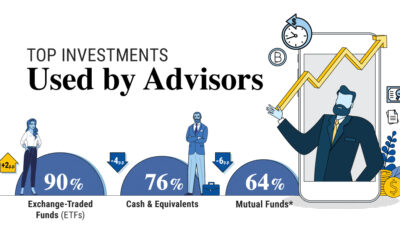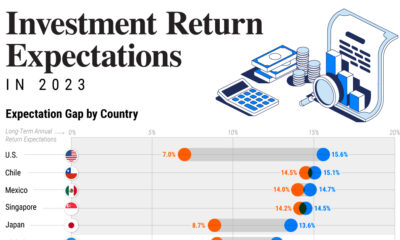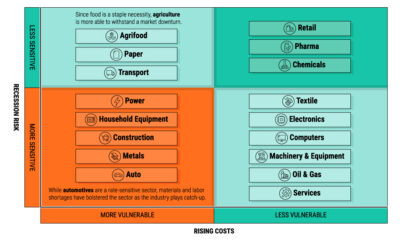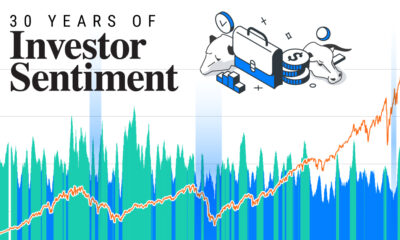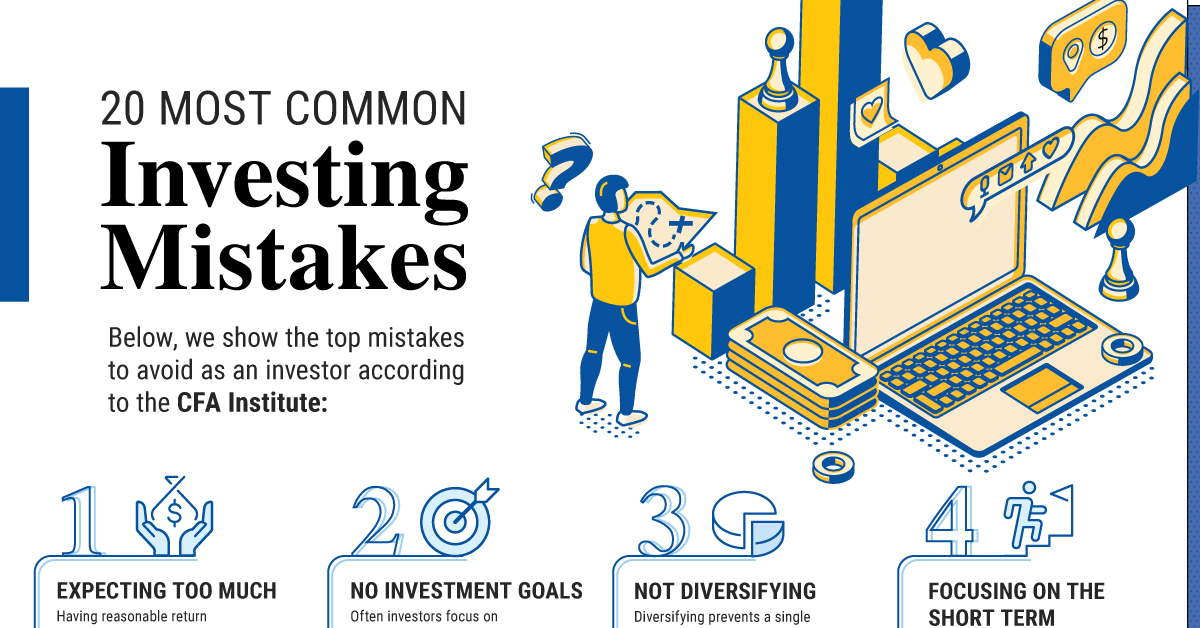This infographic is available as a poster.
5 Key Questions on Inflationary Environments
What does a changing inflationary environment mean for financial markets, and how could this impact investors?
While there are no clear answers, the above infographic from New York Life Investments looks at key questions on inflation and the potential implications looking ahead.
1. What Are the Main Factors Driving Inflation?
Often, investors closely watch core inflation since it doesn’t factor in volatile energy and food prices. In September, core inflation rose 0.6% from the previous month while headline inflation, as represented by the Consumer Price Index, increased 0.4%.
| Date | Core Inflation | Headline Inflation |
| Sep 2022 | 0.6% | 0.4% |
| Aug 2022 | 0.6% | 0.1% |
| Jul 2022 | 0.3% | 0.0% |
| Jun 2022 | 0.7% | 1.3% |
| May 2022 | 0.6% | 1.0% |
| Apr 2022 | 0.6% | 0.3% |
| Mar 2022 | 0.3% | 1.2% |
Source: Bureau of Labor Statistics, 10/13/22.
Earlier in the pandemic, surging second-hand car prices and supply-chain distortions were factors driving up inflation. But as dynamics have shifted, rising services costs, including housing, have played a significant role.
Along with these factors, a strong labor market is adding to price pressures. Nominal wages increased 6.3% annually in September, after hitting almost 7% in August, the highest in 20 years.
For this trend to reverse, unemployment levels may need to rise and interest rates may need to increase to cool an overheating economy.
2. What is the Effect of Fiscal Stimulus on Inflation?
In response to a historic crisis, the U.S. government allocated over $5 trillion in fiscal stimulus. The Federal Reserve released research that suggests that the fiscal stimulus contributed to 2.5 percentage points in excess U.S. inflation.
Specifically, the fiscal stimulus affected supply and demand dynamics, stimulating the consumption of goods. At the same time, the production of goods didn’t increase, which elevated demand pressures and price tensions.
As the short-term implications begin to unfold, the longer-term structural effects of record stimulus remain far from clear.
3. How Do Interest Rates Impact Inflation?
When inflation is running high, the Fed often hikes interest rates to cool an overheating economy.
Consider how in February 1975 there was a 17% difference between core inflation and real interest rates, an instance when the Fed got “behind the curve”. This shows that the real rate is far below the core inflation rate.
Sometimes, this prompts the Fed to raise rates to combat inflation. After several rate hikes, inflation fell to 4% by 1983, bringing the real rate and core inflation closer together. The table below shows when this gap rose to the double-digits between 1974 and early 2022:
| Date | Core Inflation | Real Rate | Difference |
| Oct 1974 | 10.6% | -0.5% | 11.1% |
| Nov 1974 | 11.0% | -1.5% | 12.5% |
| Dec 1974 | 11.3% | -2.8% | 14.1% |
| Jan 1075 | 11.5% | -4.4% | 15.9% |
| Feb 1975 | 11.9% | -5.6% | 17.5% |
| Mar 1975 | 11.3% | -5.8% | 17.1% |
| Apr 1975 | 11.3% | -5.8% | 17.1% |
| May 1975 | 10.3% | -5.1% | 15.4% |
| Jun 1975 | 9.8% | -4.3% | 14.1% |
| Jul 1975 | 9.1% | -3.0% | 12.1% |
| Jan 1980 | 12.0% | 1.9% | 10.2% |
| May 1980 | 13.1% | -2.2% | 15.3% |
| Jun 1980 | 13.6% | -4.1% | 17.7% |
| Jul 1980 | 12.4% | -3.4% | 15.8% |
| Aug 1980 | 11.8% | -2.2% | 14.0% |
| Sep 1980 | 12.0% | -1.1% | 13.1% |
| Oct 1980 | 12.2% | 0.7% | 11.6% |
| Dec 2021 | 5.5% | -5.4% | 10.9% |
| Jan 2022 | 6.0% | -6.0% | 12.0% |
Source: Peterson Institute for International Economics, Federal Reserve Bank of St. Louis, 03/14/22. The real policy interest rate is the Federal Funds Rate minus Core Inflation over 12 months.
In January 2022, this gap reached 12%, hinting towards further interest rate action from the Fed.
Over the last 11 tightening cycles since 1965, six resulted in soft landings and three resulted in hard landings. Whether or not the recent tightening cycle will result in a hard landing, also known as a significant decline in real GDP, remains an open question.
4. How Long Will Inflation Last?
From the vantage point of 2022, the direction of inflation is as complex as it is uncertain. Below, we show where inflation may be headed in the near future based on analysis from the Federal Reserve.
| 2022P | 2023P | 2024P |
| PCE Inflation | 5.4% | 2.8% | 2.3% |
| Federal Funds Rate | 4.4% | 4.6% | 3.9% |
Source: Federal Reserve Board, 09/21/22. Reflects median projections for PCE Inflation and the Federal Funds Rate.
By 2024, inflation is expected to fall closer to the 2.0% target amid higher interest rates. What other key factors could influence inflation going forward?
| 2023 Projection |
| U.S. Real GDP Growth | 1.2% |
| Interest Rates | 4.6% |
| Housing Price Growth | -10.0% |
| Unemployment Rate | 4.4% |
Source: Federal Reserve Board 09/21/22, Morningstar, 08/07/22. Interest rates represented by the Federal Funds Rate. Housing Price Growth represented by median U.S. home prices.
A combination of slowing GDP growth, higher interest rates, decreasing housing prices, and higher unemployment could potentially dampen inflation leading into 2023.
5. What May Lessen the Impact of Inflation On My Portfolio?
During inflationary periods, value stocks have tended to perform well, based on data from Robert Shiller and Kenneth French. In fact, value stocks saw nearly 8% annualized outperformance over growth during the 1970s and over 5% outperformance during the 1980s.
Similarly, tangible assets like commodities and real estate have tended to weather these periods thanks to their ability to increase portfolio diversification and stability across economic cycles. For instance, between 1973 and 2021, commodities have averaged 19.1% during inflationary periods while real estate assets averaged 5.0%.
The Big Canvas
Generally speaking, periods of high inflation over history are quite rare. Since 1947, the average U.S. inflation rate has been 3.4%.
| Inflation (1947-2021) | Percentage of Time Spent |
| Below 0% | 16% |
| Between 0 and 5% | 57% |
| Between 5 and 10% | 20% |
| Above 10% | 7% |
Source: CFA Institute, 07/19/21.
Against a changing environment, investors may consider balancing their portfolios with more defensive strategies that have been historically more resistant to inflation.


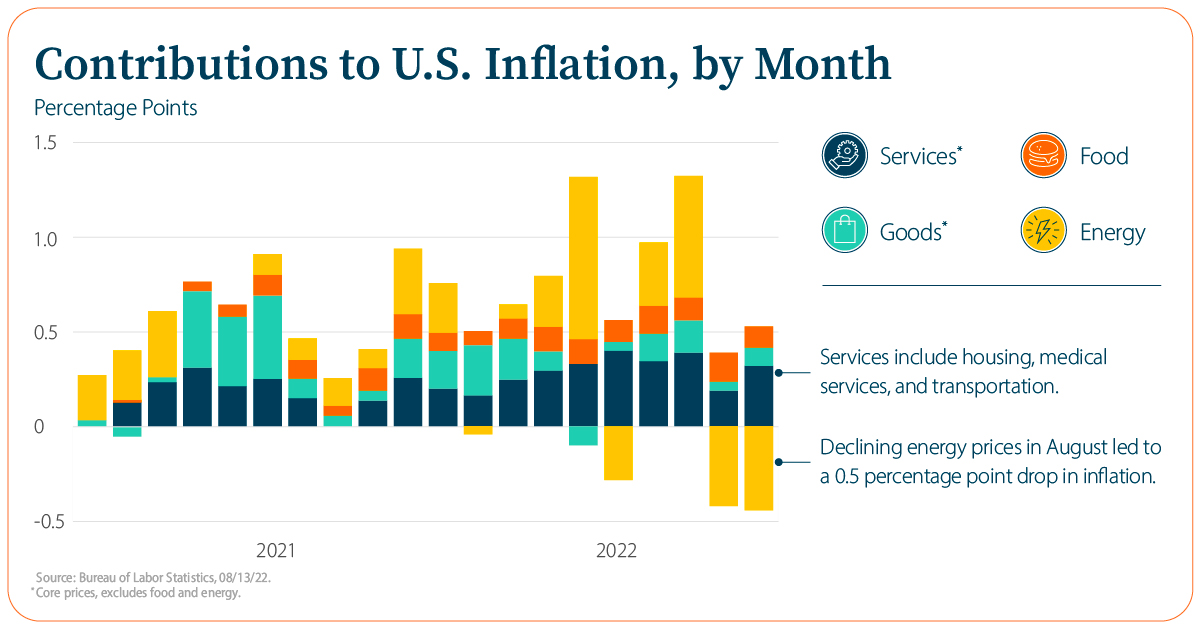

 Infographics2 years ago
Infographics2 years ago
 Markets in a Minute2 years ago
Markets in a Minute2 years ago
 Markets in a Minute2 years ago
Markets in a Minute2 years ago
 Infographics2 years ago
Infographics2 years ago
 Markets in a Minute1 year ago
Markets in a Minute1 year ago
 Markets in a Minute2 years ago
Markets in a Minute2 years ago
 Infographics1 year ago
Infographics1 year ago
 Markets in a Minute2 years ago
Markets in a Minute2 years ago





